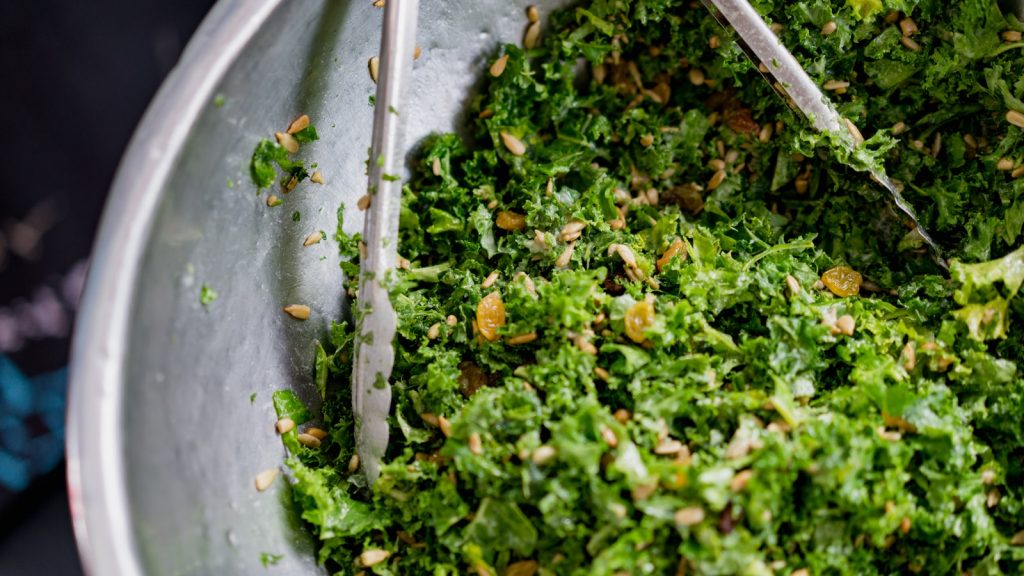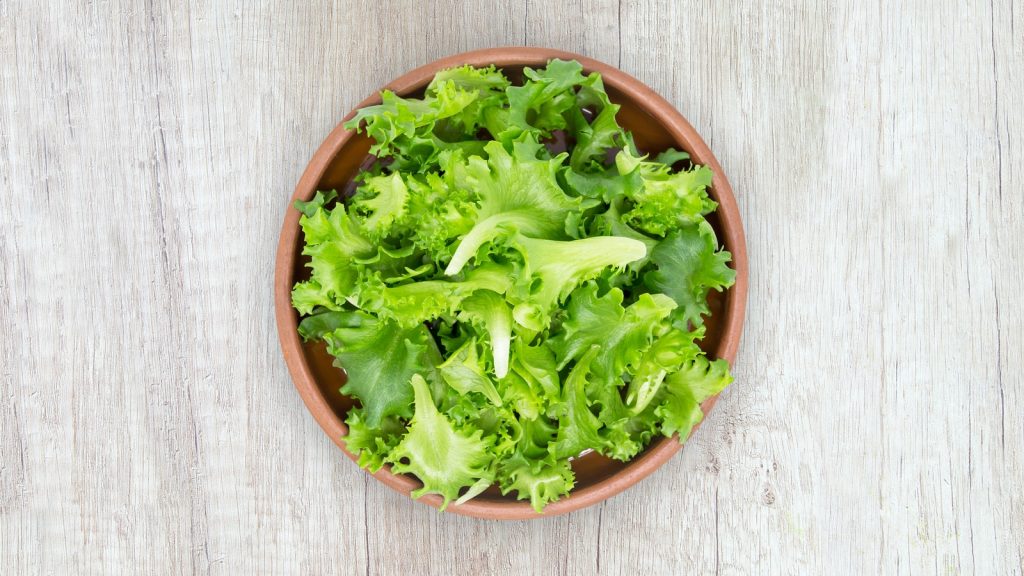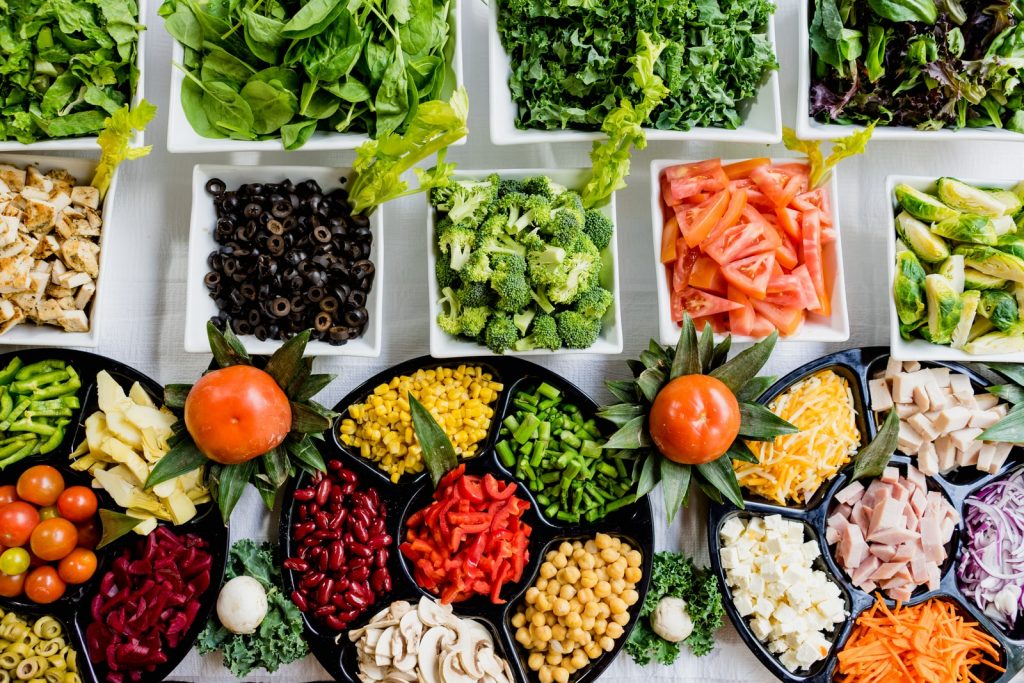Lettuce is a daisy-like annual plant belonging to the family Asteraceae. It is commonly grown as a leaf vegetable, although its stem and seeds are also harvested. Lettuce is most commonly associated with salads, although it can also be found in soups, sandwiches, and wraps; it can also be grilled. The health advantages of lettuce vary depending on the nutritional content of each kind. Iceberg lettuce is the type of lettuce that contains the fewest nutrients. Lettuce is high in vitamin K, which supports bone health. Vitamin K can also help you avoid bone fractures if you get enough of it. Over 95% of raw lettuce is made up of water. As a result, eating lettuce keeps the body hydrated. Although drinking liquids is essential, water included in foods can also help you stay hydrated. The nutritional value of lettuce varies depending on the variety. A large amount of vitamin A, as well as tiny levels of vitamin C and iron, may be found in almost all lettuces.
How Many Carbs Does Lettuce Contain?
Table of Contents
One gram of net carbohydrates is found in one cup of shredded iceberg lettuce. Only 1.5 grams of net carbohydrates are found in one cup of chopped romaine lettuce. Only five calories are in a cup of shredded iceberg lettuce. Only eight calories are in a cup of chopped romaine lettuce.
Nutrition information
Serving size of 6.25 g of lettuce, red leaf, raw contains 100 calories and 14.13 g of carbohydrate (12.5 percent RDA). Sugar 3 g (6.25 percent RDA), Protein 8.31 g (12.5 percent RDA), and Fat 1.38 g are other significant and associated nutrients and macronutrients in 100 calories (0 percent RDA). The carbohydrates RDA % chart, based on 100 calories, is presented below, along with the other essential nutrients and macronutrients.
What is the nutritional value of lettuce?
1. Lettuce does contain a lot of water. Water makes up more than 95 percent of lettuce. That, however, is not a problem. Lettuce keeps your body hydrated, and a salad can help you get to the two liters of water you need each day. You can only eat fresh lettuce since it contains so much water. It cannot be frozen, dried, or canned.
2. Lettuce contains few calories at the risk of making it evident. One hundred grams are approximately 13-16 calories, depending upon the type. So, until you weigh an ounce, you can eat lettuce; Pay attention to dressings, clothes, and other high-calorie salad ingredients if you want to eat salad and weight. These calorie bombs are often hidden. Lettuce has fiber as well. The amount depends heavily on the type of salad. A roman salad, for example, contains twice the fiber of an iceberg salad head.
3. Lettuce packed full of vitamins is 100 grames. For instance, 21% is recommended in lettuce with vitamin A daily allowance (RDA), 18% is folic acid, and 5% is Vitamin C.
4. Lettuce is also rich in essential minerals such as iron, calcium, and potassium, in addition to these vitamins. Lettuce from the iceberg contains slightly less than other lettuce varieties of vitamins and minerals.

Health Benefits
1. lipoxygenase, a protein found in romaine lettuce, can aid the body in reducing inflammation. In reality, lettuce has long been utilized in folk medicine as a pain and inflammatory cure for Arthritis.
2. Lettice is a fantastic addition to a diabetic diet because it doesn’t increase blood sugar and is low in calories and carbs. Lactucaxanthin, a vital carotenoid with anti-diabetic effects, is also found in lettuce. Lacuxaxanthin lowers blood glucose levels, which can aid in the treatment of diabetes.
3. lettuce includes critical vitamins and omega-3 fatty acids; it promotes healthy, bright skin and lustrous, nourished hair. The leafy green vegetable aids in collagen production, which improves the firmness and texture of your skin.
4. Lettuce’s fiber aids digestion, avoids constipation, and boosts intestinal health.
5. Consumption of lettuce has been related to a reduced incidence of stomach cancer. According to the World Cancer Research Fund report, non-starchy vegetables like lettuce can help prevent cancer.

Is lettuce a protein or carbohydrates?
While it is low in fiber, minerals like calcium, phosphorus, magnesium, and potassium are high. Of course, sodium is low. Moreover, vitamin C, vitamin K, and folate are packed in a Roman latte.
Interesting Types of Lettuce
1. Crisphead– Also known as iceberg or head lettuce, is one of the most widely used lettuce. While it looks similar to cabbage and it’s an entirely different species.
· Calories: 14
· Protein: 1 gram
· Fiber: 1 gram
· Folate: 7% of the Daily Value (DV)
· Iron: 2% of the DV
· Manganese: 5.4% of the DV
· Potassium: 3% of the DV
· Vitamin A: 3% of the DV
· Vitamin C: 3% of the DV
· Vitamin K: 20% of the DV
2. Another famous salad that’s common in Caesar salads is Romanesque, also known as cos. The leaves with big vena are green, crunchy. Precious leaves, sometimes red, are often added to the mixture in the spring — a combination of leaves of various leafy vegetables.
· Calories: 17
· Protein: 1 gram
· Fiber: 2 grams
· Folate: 34% of the DV
· Iron: 5% of the DV
· Manganese: 7% of the DV
· Potassium: 5% of the DV
· Vitamin A: 48% of the DV
· Vitamin C: 4% of the DV
· Vitamin K: 85% of the DV
3. Butterhead lettuce gets its name from the smooth, buttery texture of its leaves. Because of its round shape, it is also known as a cod salad. Bibb and Boston’s salad are the most popular butterhead.
· Calories: 13
· Protein: 1.5 grams
· Fiber: 1 gram
· Folate: 18% of the DV
· Iron: 8% of the DV
· Manganese: 8% of the DV
· Potassium: 5% of the DV
· Vitamin A: 18% of the DV
· Vitamin C: 4% of the DV
· Vitamin K: 85% of the DV
4. Chinese lettuce, also known as stalk lettuce or Chinese lettuce, is a popular ingredient in Chinese cuisine. Stem lettuce has a long stalk with narrow leaves, as its name suggests. Unlike other lettuces, the stem is usually consumed while the leaves are discarded. Because of the high latex concentration in the leaves, they are incredibly bitter.
· Calories: 18
· Protein: 1 gram
· Fiber: 2 grams
· Folate: 12% of the DV
· Iron: 3% of the DV
· Manganese: 30% of the DV
· Potassium: 7% of the DV
· Vitamin A: 19% of the DV
· Vitamin C: 22% of the DV
Lettuce is a crisp and refreshing addition to salads, wraps, sandwiches, and burgers. Not only is lettuce low in calories and carbohydrates, but it also has high water content, making it highly hydrating on a hot summer day. This green leafy plant includes a wealth of critical elements, such as calcium, potassium, vitamin C, and folate, whether you choose crisp iceberg lettuce, butterhead lettuce, leaf lettuce, romaine, or one of the other types.
